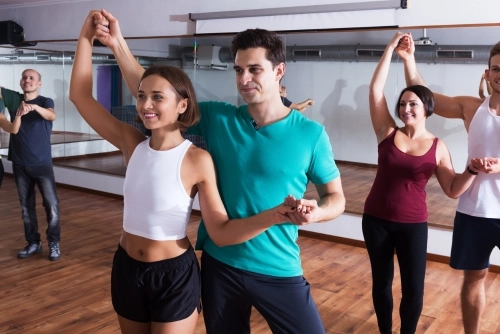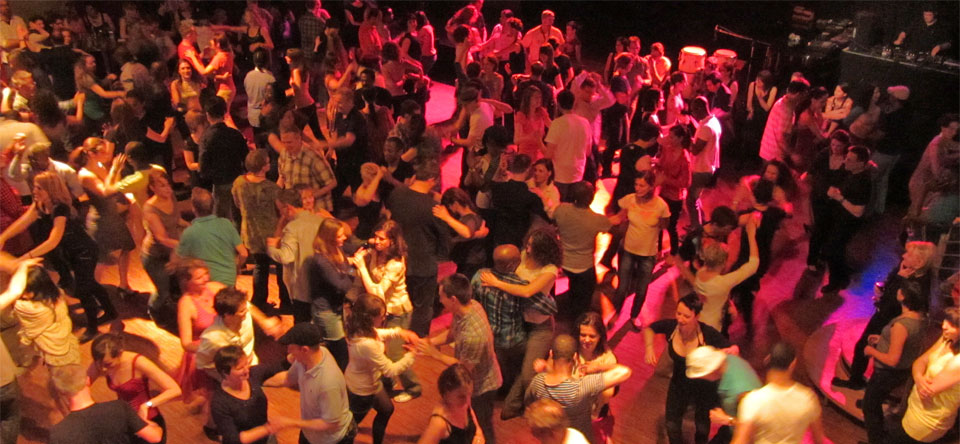Some Known Facts About Dance San Francisco.
Table of ContentsA Biased View of Dance San FranciscoDance San Francisco Can Be Fun For EveryoneDance San Francisco for BeginnersThe 8-Second Trick For Dance San Francisco
Let's consider Salsa dance and songs as a large Tree that looks like this: Salsa is danced worldwide while many technical elements of the dance coincide across designs (6 steps over 8 beats danced on a quick-quick-slow or slow-quick-quick rhythm), there are several "characteristic" attributes of the main designs of Salsa that distinguish one from the various other.Couples taking part in a Gambling enterprise Rueda dance all moves in unison as called by a Leader. Distinct attributes of Cuban style salsa are round turn patterns (with "break back" steps on counts 1 and 5) in addition to body activity influenced by standard Afro-Cuban folkloric dances. Distinguishing attributes of Cali style salsa is quick and complex footwork, danced with a solid hand hold link in between partners.
The origins of the design are a subject of argument, yet it is stated that New york city style Salsa dancing came from the 1960's as a result of the influx of Latin American emigrants after the Cuban Revolution (salsa dancing sf). Eddie Torres is the most popular New york city design professional dancer, being nearly universally attributed with popularizing the style to dance centres beyond New york city
The fundamental rhythm of "On-2" is slow-quick-quick. The "youngest" of the styles of Salsa, L.A (https://pinto-switch-30d.notion.site/Feel-the-Heat-Dive-into-Hot-Bachata-Nights-SF-with-Dance-San-Francisco-eda96dffc71c41ecabd061b0da96aff3). Style (some people have called it "West Shore" style) became preferred in the 1990's and has its beginnings in ballroom (Mambo, Swing and Cha, Cha, Cha). Turn patterns lead and adhere to methods are heavily affected by these styles, with the Cross Body Lead being the cornerstone of the design
The smart Trick of Dance San Francisco That Nobody is Discussing
Design are implementation of turn patterns and figures in the "slot", with the break actions on matters "1" and "5". This style is likewise characterized by expensive and frequently intricate arm designing by the comply with to accent the "1" and "5" matters. The fundamental rhythm of "On-1" is quick-quick-slow. While Salsa songs has strong origins in Cuban, Colombian and Puerto-Rican folkoric practices, it can not be marked down that all Afro-Latin and Latin American societies have actually added to contemporary Salsa music as we understand it today.


What Does Dance San Francisco Do?
identifying characteristics of Salsa songs are: 4/4 time signature, Child Clave and Tumbao rhythms, Montuno Piano Unless you have a history in songs, the above 3 qualities possibly imply nothing to you. An easier method to explain Salsa music is how it does NOT sound like various other sorts of Latin American popular songs.

It's time for lessons. With many studios available and various designs to select from, where does a total rookie begin? Most new professional dancers pick to learn L.A. "On-1" design slotted Salsa styles are the most common in The United States and Canada (with some exceptions of some city centres that still mainly welcome Cuban and Puerto Rican designs) and L.A.
.A. Design will rapidly educate you the principles of Salsa timing, weight transfer and transform pattern implementation. Several dancers, as soon as they have actually had a year or 2 of dance L.A. Style Salsa under their belts, "switch" to New York style in click for source order to diversify their dance vocabulary; however numerous dancers make a decision to stick to simply one style of Salsa and appreciate their time on the dancing floor in that specific design. salsa dancing sf.
Style and New York City Style all being danced in the same club, with a lot of the professional dancers having the ability to switch over from one style to the various other from one track to the following. salsa dancing sf. No issue which style you select it is essential to stick to that design till you're very comfortable with the basics of timing, body rhythm and foundation relocation execution before thinking about "switching" designs (if you desire to)
As soon as you start lessons be ready to dedicate time and energy to learning just how to dance in basic it takes a full novice (i. e., a person with little or no dancing experience) about 6 months of actively taking lessons and going out and exercising at the very least twice a week to reach a factor where pattern execution starts to feel "all-natural".